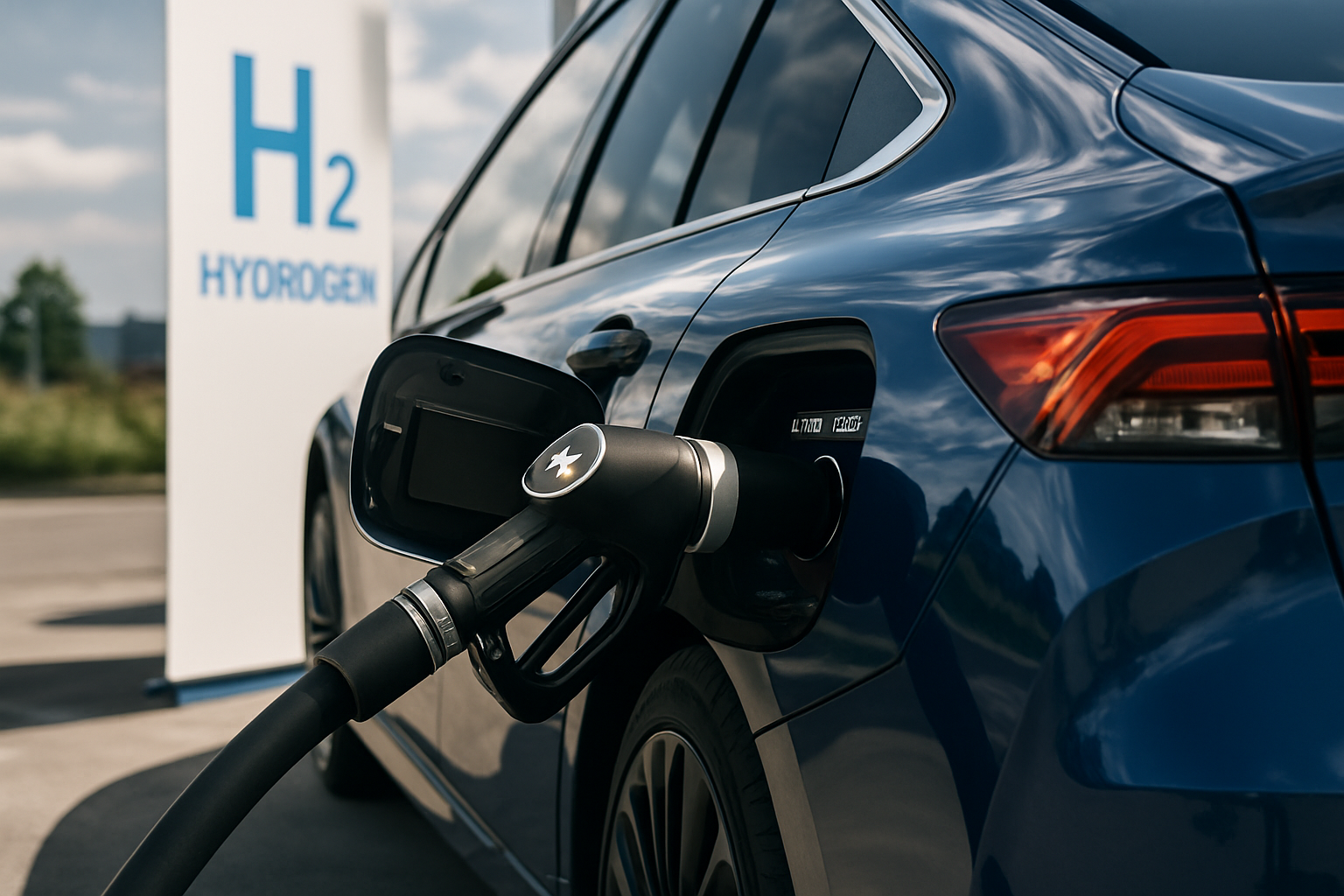The Resurgence of Hydrogen Fuel Cell Vehicles
In a world grappling with climate change and seeking sustainable transportation solutions, hydrogen fuel cell vehicles (FCVs) are making a comeback. Once dismissed as impractical, these cutting-edge automobiles are now poised to revolutionize the automotive landscape. With zero emissions, quick refueling times, and impressive range capabilities, FCVs offer a tantalizing glimpse into the future of clean mobility. This article delves into the technology behind hydrogen fuel cells, explores their potential impact on the automotive industry, and examines the challenges that lie ahead.

How Hydrogen Fuel Cells Work
At the heart of a hydrogen fuel cell vehicle lies a complex yet elegant system. Hydrogen stored in high-pressure tanks combines with oxygen from the air in a fuel cell stack. This electrochemical reaction produces electricity, which powers an electric motor, propelling the vehicle forward. The only byproduct of this process is water vapor, making FCVs truly zero-emission vehicles. Unlike battery electric vehicles, FCVs can be refueled in minutes, offering a driving experience more akin to traditional gasoline-powered cars.
Advantages of Hydrogen Fuel Cell Vehicles
FCVs boast several compelling advantages over other alternative fuel vehicles. Their quick refueling times address the range anxiety associated with battery electric vehicles, while their long driving ranges rival those of conventional gasoline-powered cars. Additionally, hydrogen can be produced using renewable energy sources, potentially creating a closed-loop, carbon-neutral transportation system. For heavy-duty applications like long-haul trucking, where battery weight becomes prohibitive, hydrogen fuel cells offer a promising solution.
Current Market Status and Future Projections
While FCVs currently represent a small fraction of the automotive market, their numbers are growing. Several major automakers, including Toyota, Honda, and Hyundai, have released commercial FCV models. In countries like Japan, South Korea, and Germany, government initiatives are driving infrastructure development and adoption. Industry analysts project significant growth in the FCV market over the next decade, particularly in the commercial vehicle sector.
Challenges and Hurdles to Overcome
Despite their potential, FCVs face significant challenges. The most pressing issue is the lack of hydrogen refueling infrastructure, which currently limits widespread adoption. Additionally, the production of hydrogen itself can be energy-intensive and costly, though advancements in green hydrogen production methods show promise. Safety concerns, while largely addressed by modern engineering, still linger in public perception. Overcoming these hurdles will require concerted efforts from automakers, governments, and energy companies.
The Role of FCVs in a Diverse Energy Landscape
As the automotive industry transitions away from fossil fuels, it’s becoming clear that no single technology will dominate. Instead, a diverse ecosystem of powertrains, including battery electric, hydrogen fuel cell, and potentially other emerging technologies, will likely coexist. FCVs may find their niche in long-distance travel, heavy-duty transportation, and regions where rapid refueling is crucial. This diversity in energy solutions will provide consumers with more choices and help accelerate the transition to sustainable mobility.
Technological Advancements Driving FCV Innovation
Recent breakthroughs in fuel cell technology are addressing many of the earlier limitations. New catalyst materials are reducing the reliance on precious metals, lowering production costs. Advanced membrane technologies are improving efficiency and durability. Innovations in hydrogen storage, such as metal hydride tanks, promise to increase range while reducing weight and cost. These advancements are making FCVs increasingly competitive with other powertrain technologies.
Environmental Impact and Sustainability
While FCVs themselves produce zero emissions, the environmental impact of hydrogen production remains a concern. Currently, most hydrogen is produced from natural gas through a process called steam methane reforming, which does generate carbon emissions. However, the push towards green hydrogen, produced through electrolysis powered by renewable energy, could create a truly sustainable fuel source. As the grid becomes greener, so too will the hydrogen used in FCVs, further enhancing their environmental credentials.
The Global Race for Hydrogen Leadership
Countries around the world are vying for leadership in hydrogen technology. Japan, in particular, has made hydrogen a cornerstone of its energy strategy, investing heavily in research, development, and infrastructure. China, with its massive automotive market, is also making significant strides in FCV technology. In Europe, countries like Germany and France are spearheading hydrogen initiatives. This global competition is driving innovation and accelerating the development of hydrogen technologies across various sectors.
A Promising Future for Hydrogen Mobility
As we stand on the cusp of a transportation revolution, hydrogen fuel cell vehicles offer a compelling vision of the future. With their ability to provide long-range, zero-emission mobility with quick refueling times, FCVs could play a crucial role in decarbonizing our transportation systems. While challenges remain, the rapid pace of technological advancement and growing global investment suggest that hydrogen’s time may have finally come. As the automotive landscape continues to evolve, FCVs stand poised to carve out a significant niche, contributing to a cleaner, more sustainable future of mobility.





